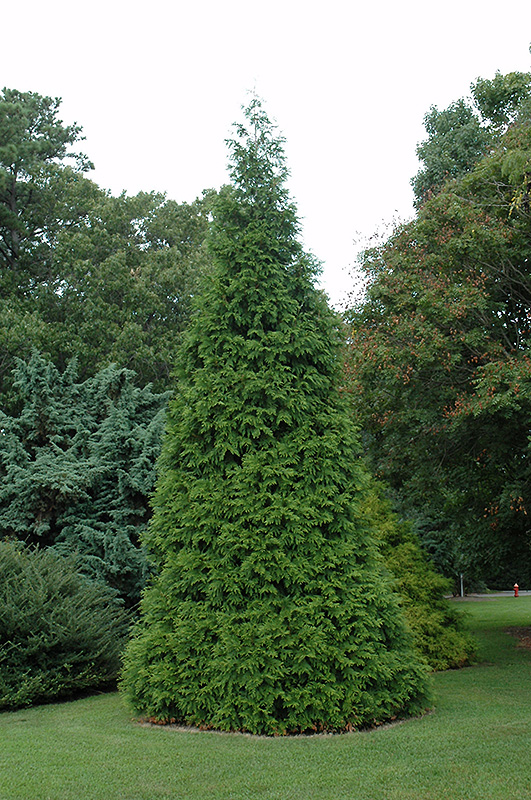Plant Search
Height: 30 feet
Spread: 10 feet
Sunlight:
![]()
![]()
Hardiness Zone: 4b
Description:
A stately looking upright evergreen that grows uniformly and is perfect for privacy or wind screening; very resilient and resists ice and snow damage, grows in almost any soil type; this arborvitae is usually avoided by deer
Growing Place Choice Plants
Our Growing Place Choice plants are chosen because they are strong performers year after year, staying attractive with less maintenance when planted in the right place.
Learn more about this promotion!
Ornamental Features
Green Giant Arborvitae is primarily valued in the landscape for its distinctively pyramidal habit of growth. It has rich green evergreen foliage. The scale-like sprays of foliage remain green throughout the winter. The shaggy brown bark adds an interesting dimension to the landscape.
Landscape Attributes
Green Giant Arborvitae is a dense multi-stemmed evergreen tree with a distinctive and refined pyramidal form. Its relatively fine texture sets it apart from other landscape plants with less refined foliage.
This is a high maintenance tree that will require regular care and upkeep. When pruning is necessary, it is recommended to only trim back the new growth of the current season, other than to remove any dieback. It has no significant negative characteristics.
Green Giant Arborvitae is recommended for the following landscape applications;
- Shade
- Vertical Accent
- Hedges/Screening
- Windbreaks and Shelterbelts
Planting & Growing
Green Giant Arborvitae will grow to be about 30 feet tall at maturity, with a spread of 10 feet. It has a low canopy, and should not be planted underneath power lines. It grows at a fast rate, and under ideal conditions can be expected to live for 50 years or more.
This tree does best in full sun to partial shade. It does best in average to evenly moist conditions, but will not tolerate standing water. It is not particular as to soil type or pH. It is somewhat tolerant of urban pollution, and will benefit from being planted in a relatively sheltered location. Consider applying a thick mulch around the root zone in winter to protect it in exposed locations or colder microclimates. This particular variety is an interspecific hybrid.
A NetPS Plant Finder tool


